Speakers & Sessions
Topics include updates on ACI Codes and initiatives, concrete repair, environmental engineering, and much more.

Dr. Ali Alqarni, PhD, MACI
Conference MC
Dr. Ali Alqarni is an Associate Professor in the Civil Engineering Department at King Saud University, Riyadh, Saudi Arabia. Prior to joining the Department of Civil Engineering, Alqarni was a Graduate Research Assistant at the University of Texas at Austin, Austin, TX, USA, where he worked on various projects and received his MSc and PhD in civil engineering in 2012 and 2017, respectively. His research interests include behavior of reinforced and prestressed concrete structures and bridges, innovative construction materials, modern methods of construction, repair and rehabilitation of concrete structures and bridges, and forensic engineering. He is an active member of the American Concrete Institute (ACI) and American Society of Civil Engineers (ASCE). Alqarni is currently serving as Guest Editor of New Technologies in Concrete Structures (Buildings, MDPI). Alqarni is a technical committee member of the Saudi Building Code National Committee (SBCNC) and has provided consulting structural engineering services in various residential, commercial, and industrial projects.
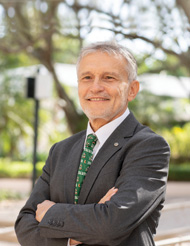
Antonio Nanni, PhD, PE
ACI’s 100th President
During the past 35-plus years, Nanni has studied concrete and advanced composite-based systems as the principal investigator on several research projects sponsored by federal and state agencies and private industry. He has also contributed to field projects that have received awards from organizations such as the Florida Engineering Society (FES) and the International Concrete Repair Institute (ICRI). His research in materials and structures has impacted the development of guides, specifications, and codes in the United States and abroad. Nanni is the Editor-in-Chief of the American Society of Civil Engineers (ASCE) Journal of Materials in Civil Engineering (JMCE) and serves on the editorial boards of other technical journals. He has advised 80-plus graduate students pursuing master’s and doctoral degrees and has published extensively (280-plus papers in refereed journals, 410-plus papers in conference proceedings, and co-author of two books).
Nanni has received numerous awards, including the 2019 Knight of the Order of the Star of Italy from the President of Italy; 2018 John B. Scalzi Research Award from The Masonry Society; 2017 ASCE Richard R. Torrens Award for outstanding performance as editor of JMCE; 2017 Outstanding Service Award, Florida Engineering Society; and 2016 Foreign Member, Accademia delle Scienze dell’Istituto di Bologna, Italy.
Nanni’s research interests are in construction materials and their structural performance and field application, including monitoring and renewal with a focus on sustainability. He is currently Site Director of the National Science Foundation’s Industry/University Cooperative Research Center for the Integration of Composites into Infrastructure (CICI). He is a licensed professional engineer in Italy and the states of Florida, Pennsylvania, Missouri, and Oklahoma.
Presentation: ACI International Update: New Initiatives for Advancing the Concrete Industry
A brief introduction to the American Concrete Institute mission and key products, services, and initiatives developed and maintained by ACI volunteers and supported by ACI staff. The session will focus on recent ACI updates as leading global authority for the development, dissemination, and adoption of its consensus-based standards and technical resources recognized and used globally to help ensure safe, durable, and sustainable concrete projects.
Presentation: Highlights on CODE-440.11-22: Building Code Requirements for Structural Concrete Reinforced with Glass Fiber-Reinforced Polymer (GFRP) Bars
The challenges of steel reinforcement corrosion in concrete elements exposed to aggressive environments, the need for more sustainable and resilient structures, and the advances in composite manufacturing as well the availability of new experimental evidence have prompted the development of a new ACI Building Code addressing the design and construction of reinforced concrete (RC) elements using internal glass fiber-reinforced polymer (GFRP) bars. This presentation provides some insights in ACI CODE-440.11-22, “Building Code Requirements for Structural Concrete Reinforced with GFRP Bars.” This Code is dependent on ACI 318-19 and mandates minimum requirements for materials, design, and detailing of structural concrete buildings reinforced with GFRP bars that conform to ASTM D7957.
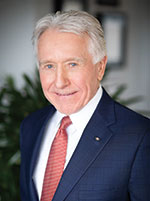
Cary Kopczynski, PE, SE, FACI, FPTI
Cary Kopczynski is CEO and Senior Principal of Cary Kopczynski & Company (CKC), an award-winning structural engineering firm with offices in Seattle and Chicago. CKC designs major urban buildings throughout the United States and beyond. The firm has won over eighty regional, national, and international awards, and has been selected several times by Zweig White and Structural Engineer magazine as a top structural engineering firm to work for. Mr. Kopczynski is a recognized expert in the design of reinforced concrete and post-tensioned concrete building structures and has authored numerous articles in the fields of structural analysis, design, and construction. Mr. Kopczynski is the past President of the American Concrete Institute (ACI. Mr. Kopczynski also serves on the ACI Foundation Board of Trustees, the ACI Board of Directors, and served for many years on ACI Committees 318 and 352. He is an ACI Fellow and was honored with ACI’s Charles S. Whitney medal in 2015 and Alfred E. Lindau Award in 2017 for his outstanding contributions to the industry. He is a past President of the ACI Washington State Chapter. Mr. Kopczynski served on the Post-Tensioning Institute’s (PTI) Board of Directors, served on PTI’s Executive Committee, and is the past Chair of PTI’s Technical Advisory Board. He is a PTI Fellow and served on many PTI committees related to building design and professional development. The Wire Reinforcement Institute (WRI) made Mr. Kopczynski an Honorary Member for his work in advancing the use of high-strength deformed wire reinforcing in buildings. ENR magazine twice selected Mr. Kopczynski as one of its “Top 25 Newsmakers” for CKC’s pioneering work in the fields of high strength reinforcing bar and Steel Fibrous Reinforced Concrete (SFRC). CKC has continued to advance the use of high-strength reinforcing and SFRC by implementing it in major high-rise buildings and is continually investigating its use in new applications. Mr. Kopczynski served on the Board of Directors of the Structural Engineers Foundation of Washington, is a past President of the Seattle Chapter of the Structural Engineers Association of Washington (SEAW), past Chair of the SEAW Education Committee, and served as an instructor for SEAW's Structural Engineering Refresher program for many years.
Presentation: The ACI 318 Concrete Building Code: Past, Present, and Future
The first version of the American Concrete Institute building code provisions was published in 1908. Since that time, the ACI Building Code has been reviewed and revised twenty-nine times, in order to keep pace with the latest research on reinforced concrete, and to remain relevant to evolving structural design procedures and construction methods. In the recent past, between 2008 and 2014, the ACI 318 Building Code was completely reorganized so that the Code would be easier for engineers to use in daily practice. The current edition of the ACI Code was published in 2019: ACI 318-19/ACI 318-19R: Building Code Requirements for Structural Concrete and Commentary. This presentation provides an overview of the current design philosophy and organization of the ACI 318 Building Code, a summary of key technical developments in the Code over the last ten years, and trends to expect in the next edition of the Code, which is currently under development and will be published in early 2025.
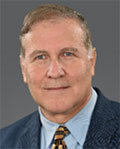
Khaled Nahlawi, PhD, PE
Khaled Nahlawi is a Distinguished Engineer at the American Concrete Institute, Farmington Hills, MI, USA. His role at ACI is to provide technical and administrative support to ACI’s technical committees and communicate the work of these committees to other Standards Developing Organizations and regulatory agencies. He received his PhD from the University of Michigan, Ann Arbor, MI. He has over 20 years of experience in the design and strengthening of structures. He joined ACI in 2009 as a Senior Engineer and has supported, among other duties, the reorganization effort of ACI 318. He is the current Secretary of the ACI Technical Activities Committee Subcommittee TAC Repair and Rehabilitation Committee, and ACI Committee 562, Evaluation, Repair and Rehabilitation of Concrete Structures.
He is the author of ACI MNL-17, the Reinforced Concrete Design Handbook; MNL-3, Guide to the Code for Assessment, Repair, and Rehabilitation of Existing Concrete Structures; and MNL-66, ACI Detailing Manual. He is a licensed professional engineer in California and Michigan.
Presentation: Why do we Need a Repair Code? ACI 562
Introducing ACI 562-21, “Code Requirements for Assessment, Repair, and Rehabilitation of Existing Concrete Structures and Commentary,” which is the first code produced specifically for the repair of reinforced concrete. Topics covered in this presentation will include:
-
- Why a repair code is needed
- The philosophy behind ACI 562
- How the code promotes consistency in repair design
- The significance of a quality assurance program for successful repairs
Presentation: How to Perform Seismic Evaluation and Retrofit of Existing Concrete Buildings with ACI 369.1-22
The American Concrete Institute CODE-369.1-22: Seismic Evaluation and Retrofit of Existing Concrete Buildings—Code and Commentary was written to establish a standardized method for evaluating the seismic performance of existing buildings, and for designing any improvements required to correct seismic deficiencies.This presentation summarizes the overall philosophy and organization of the ACI 369 Code, including a general outline of the design approach for seismic strengthening.This is followed by descriptions of how the ACI 369 Code should be used in engineering practice, including the selection of seismic hazard levels; establishing desired seismic performance objectives; materials testing and information collection; methods for analytical modeling of existing structures; and finally, the identification of structural deficiencies that require seismic retrofitting.

Ahmed Shuraim, PhD, M. ACI
Chairman, Structural Committee, Saudi Building code National Committee
Ahmed Shuraim, a professor of structural engineering, holds an academic background with MSc and PhD degrees from the University of Michigan, and a BSc from King Saud University. He is an active member of esteemed professional organizations, including ACI, ASCE, and ICC, and served on international committees including ACI-318-2019. Nationally, Ahmed is the head of the structural technical committee at SBC and the Gulf building code.With over forty years of experience, Dr. Shuraim excels in academic teaching and research at King Saud University, focusing on standards and codes development, publishing significant research papers, and holding two engineering patents. He has been recognized with a Fulbright scholarship award.Currently, Ahmed is engaged in the NEOM-The LINE project, a visionary vertical city monumental project of unparalleled scale and vision, transcending existing codes and standards. Dr. Shuraim's profound knowledge and diverse skill set make him an asset in shaping the success of this ambitious project.
Presentation: The Saudi Building Code: A Journey Through History, Present, and Future Perspectives
Building codes play a crucial role in shaping the built environment, ensuring safety, and promoting sustainability. The Saudi Building Code (SBC) stands as a pivotal regulatory framework within the construction industry, driving progress and innovation.The development of building codes in Saudi Arabia has witnessed significant milestones. From its early iterations to the present version, the SBC has evolved to align with international best practices while catering to local requirements. Key developments include the establishment of the Saudi Building Code National Committee and collaborations with organizations like ACI, ICC, ASCE, AISC, AISI.The SBC encompasses a comprehensive range of construction aspects, including structural design, fire safety, energy efficiency, and accessibility. Its implementation across projects has yielded positive outcomes, ensuring safety, quality, and sustainability within the built environment. Success stories and case studies exemplify the effective application of the SBC for Mega projects around the Kingdom. The future of the SBC envisions continuous enhancements to incorporate emerging technologies, sustainability objectives, and industry advancements. Stakeholder engagement and collaboration, exemplified by conferences hosted by ACI and SBC, will play a vital role in shaping the code's trajectory. Upcoming initiatives include digital technology integration, green building practices, and alignment with international standards.In conclusion, The Saudi Building Code stands as a paramount instrument in promoting safe, sustainable, and high-quality construction practices in Saudi Arabia. The ACI and SBC conference provides a platform for knowledge sharing and collaboration to further propel the industry forward. By actively engaging with the SBC, contributing to its development, and leveraging its provisions, we can create a built environment that upholds the highest standards of safety and sustainability.
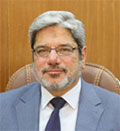
Ali Attiyah, PhD
ACI Iraq Chapter- Faculty of Engineering, University of Kufa
ACI member Ali Naji Attiyah is an Assistant Professor in Civil Engineering Department at the University of Kufa, Kufa Najaf, Iraq. He received his PhD in structural engineering from the University of Baghdad, Baghdad, Iraq, in 2000. He has more than 20 years of teaching and research in reinforced concrete design, in addition to the design and evaluation of concrete structures. For several years, he taught advanced reinforced concrete design for master’s studies in hydraulic structures, where he used the ACI 350 Code, and used his experience with this Code in the structural design of many infrastructure projects in Iraq such as water and sewage treatment plants. Attiyah is the Executive Director of the ACI Iraq Chapter since its formation in 2013. He is a member of ACI Committee S803, Faculty Network Coordinating Committee. Recently, he signed with ACI on behalf of the Iraq Chapter an agreement to translate ACI 318-19 into the Arabic language.
Presentation: Do we Have an Arabic Version of ACI 318?
The Arabic translation of ACI 318-19 is being prepared by the ACI Iraq Chapter to disseminate its use in the Arabic-speaking world. The translation process was divided into four stages: technical translation, technical translation review, linguistic review, and editing. The translation will adopt the common Arabic terms and an index of other terms will be attached to the document.
Presentation: Why 350 and not 318 for Environmental Structures?
The “Code Requirements for Environmental Engineering Concrete Structures” covers the structural design, materials selection, and construction of environmental engineering concrete structures. Such structures are used for conveying, storing, or treating water and wastewater, other liquids, and solid waste. Environmental engineering concrete structures are subject to uniquely different loadings and severe exposure conditions that require more restrictive serviceability requirements and may provide longer service lives than non-environmental structures. The Code presents additional material, as well as modified portions of the ACI 318-05, ACI 318-08, and ACI 318-11 building codes that are applicable to environmental engineering concrete structures.

Cary Kopczynski, PE, SE, FACI, FPTI
Cary Kopczynski is CEO and Senior Principal of Cary Kopczynski & Company (CKC), an award-winning structural engineering firm with offices in Seattle and Chicago. CKC designs major urban buildings throughout the United States and beyond.
Presentation: Introduction to PRO: An ACI Center of Excellence for Advancing Productivity
The mission of PRO is to collaborate with designers, material suppliers, builders, and other industry stakeholders to continually improve the constructability of design and productivity of construction for concrete structures of all types. PRO acts as a catalyst for solving the barriers to constructability to advance concrete construction productivity.
The brief introduction will highlight how PRO will collaborate with designers, materials suppliers, and contractors to identify and resolve issues that negatively impact productivity in concrete construction. The Center and its Members aim to advance new technologies and processes that improve productivity beyond historic levels.
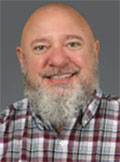
Panel Discussion: What’s Holding Back Productivity?
The panel discussion will focus on productivity struggles and achievements that can help engineers, contractors, owners, and material suppliers recognize and implement strategies that allow concrete construction to overcome years of stagnation in productivity. Be prepared to share your thoughts on what factors prevent concrete construction from being as productive as possible. Panel members representing designers, contractors, material suppliers, and owners will share their thoughts on the topics brought up at the panel discussion and provide their unique insight into what needs to be done to improve productivity in the concrete industry.
Panelists:
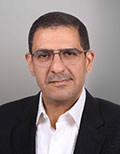
Charles Malek
Director of Structural Design, Dar Al-Handasah (Shair and Partners)
Mr. Malek is the Senior Director of the Structures & Bridges Engineering Dept. at Dar Al-Handasah (Shair & Partners) since 2006. He is in charge of leading and directing the structural design works undertaken by all the design centers of the Firm. He received his BS in civil engineering in 1995 from ESIB Beirut, and MS’s in Special structures as well as Construction techniques from CHEBAP and ESTP Paris respectively in 1996. His particular emphasis on reinforced concrete, prestressed concrete and earthquake engineering, has enabled him to successfully lead all types of structures and bridges starting from the conceptual stage up to the final detailed design phase as well as the follow-up on site construction activities.
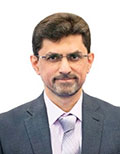
Wael Darkazanli, COO
Atheel Contracting - Faisal BinSaedan for Investment and Real Estate Development Group
Wael has accumulated over 20 years of experience in the construction industry, with a focus of more than 12 years in Project Management and PMO services. He has successfully executed various types of PMOs for both public and governmental sectors. Currently, Wael holds the position of Chief Operating Officer (COO) at Atheel Contracting.
Throughout his career, Wael has had the opportunity to work with both local and international firms, gaining valuable experience across a wide range of construction projects. These projects have included high-rise buildings, residential compounds, and educational buildings. Wael has held diverse technical and managerial positions, showcasing his versatility and expertise in the field.
Wael's educational background includes a Bachelor's degree in Civil Engineering and a Master's degree in Project Management. Furthermore, he is currently pursuing a Doctor of Business Administration degree.

Dr. Abdulrahman Almunabhi, BSc Eng., MSc, PhD, PE
Director of Codes and Standards (A), NEOM
Dr. Abdulrahman Almunabhi is a recognized figure in the sphere of construction and engineering, known for his profound expertise and impactful contributions. Currently serving as the acting Director of Codes and Standards for NEOM, his insights have become integral to shaping the future of urbanization and development. With a notable career spanning various facets of the industry, he has amassed a wealth of knowledge that uniquely positions him as a thought leader. Dr. Almunabhi's journey is characterized by versatility and excellence. Having held roles such as project director and construction director, he has demonstrated exceptional leadership in steering complex projectsto success. His academic pursuits are equally impressive, with a PhD in civil engineering underscoring his commitment to knowledge acquisition and innovation.
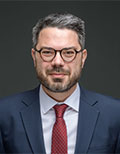
Chris Leptokaridis
Technical and Strategy Director, Saudi Readymix
Chris Leptokaridis (Ceng, MSOE, MICT) joined Saudi Readymix as Technical Director in 2015 and since 2021 as the Technical, Marketing & Strategy Director. He holds a BSc. in Civil Engineering from the Uni. of Sheffield & an MSc. in Construction Management & Concrete Technology from the Uni. of Dundee. He has previously held positions at Lafarge and Titan Cement, during which time he supported Cement & Concrete operations in multiple countries. He has more than 20 years of hands-on experience in cement and concrete, providing solutions for major projects and operation support/ troubleshooting across different countries. Before coming to the Gulf, he has worked in projects in Europe, Egypt, Turkey, and the USA. He is highly experienced in managing large teams and working in diverse and challenging projects. He has led joint academic/industry teams in European Union funded research programs and has published several papers in academic journals, mostly on carbon nanotube research and recycled materials.
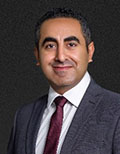
Mansour Faried, MSc. CM, PMP, CCE
Chief Engineer, CSCEC ME
Mansour Faried is currently the Chief Engineer at CSCEC ME, a key role within the Senior Management of China State Construction Engineering Corporation (Middle East). His responsibility includes leading the Technology & Quality Management team of this globally leading contractor. In this capacity, he drives the development of technology-focused proposals and innovative engineering solutions for both ongoing and upcoming projects across the Middle East.Mansour holds a master’s degree in construction management from Reading University, specializing in Construction Innovation, Building Information Modelling (BIM), Virtual Construction, and 3D printing applications in construction. With an impressive career spanning over two decades, Mansour has significantly contributed to the realization of ambitious mega projects, characterized by their complexity and landmark status. This substantial experience has cultivated his pragmatic perspective on the construction industry, endowing him with the ability to proactively pinpoint minor imperfections before they escalate into substantial operational challenges. Consequently, he has adeptly managed projects of varying scales and typologies, assuming a pivotal role in guiding diverse stakeholders towards judicious decisions, characterized by optimal timing and approach.
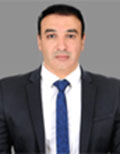
Rami Yaghi
Deputy Regional Manager -- Eastern Provinces ACES - KSA
Engr. Rami Yaghi completed his M.Sc in Geotechnical and Infratructure in civil engineering and Surveying from Germany. He is a Certified Engineering Consultant in the field of civil testing and inspection. He is an experienced leader with a 25-year background in material testing and laboratory management, consistently demonstrating advanced expertise to achieve accuracy in various projects. Notable ventures include multiple high value projects like King Salman Energy Park(SPARK), King Salman International complex for Maritime Industries etc.. Has a strong expertise in establishing new laboratories and new testing activities. Garnering multiple accolades during his tenure, he has been a driving force for ACES in expanding the laboratories in the entire eastern province.